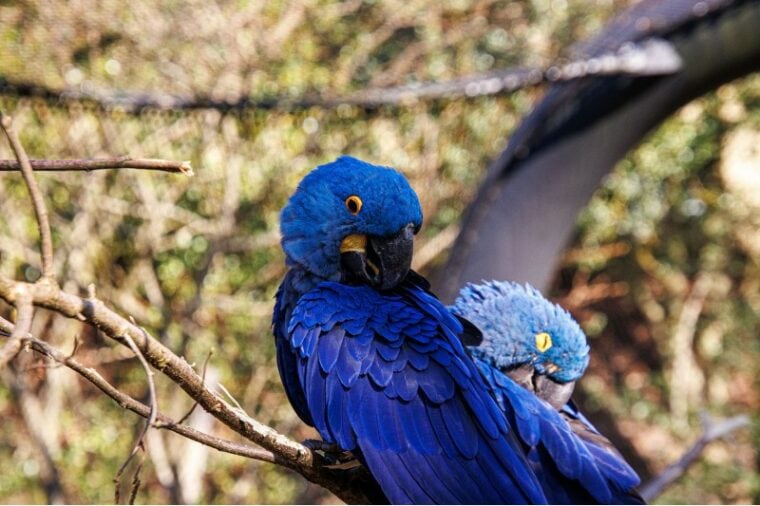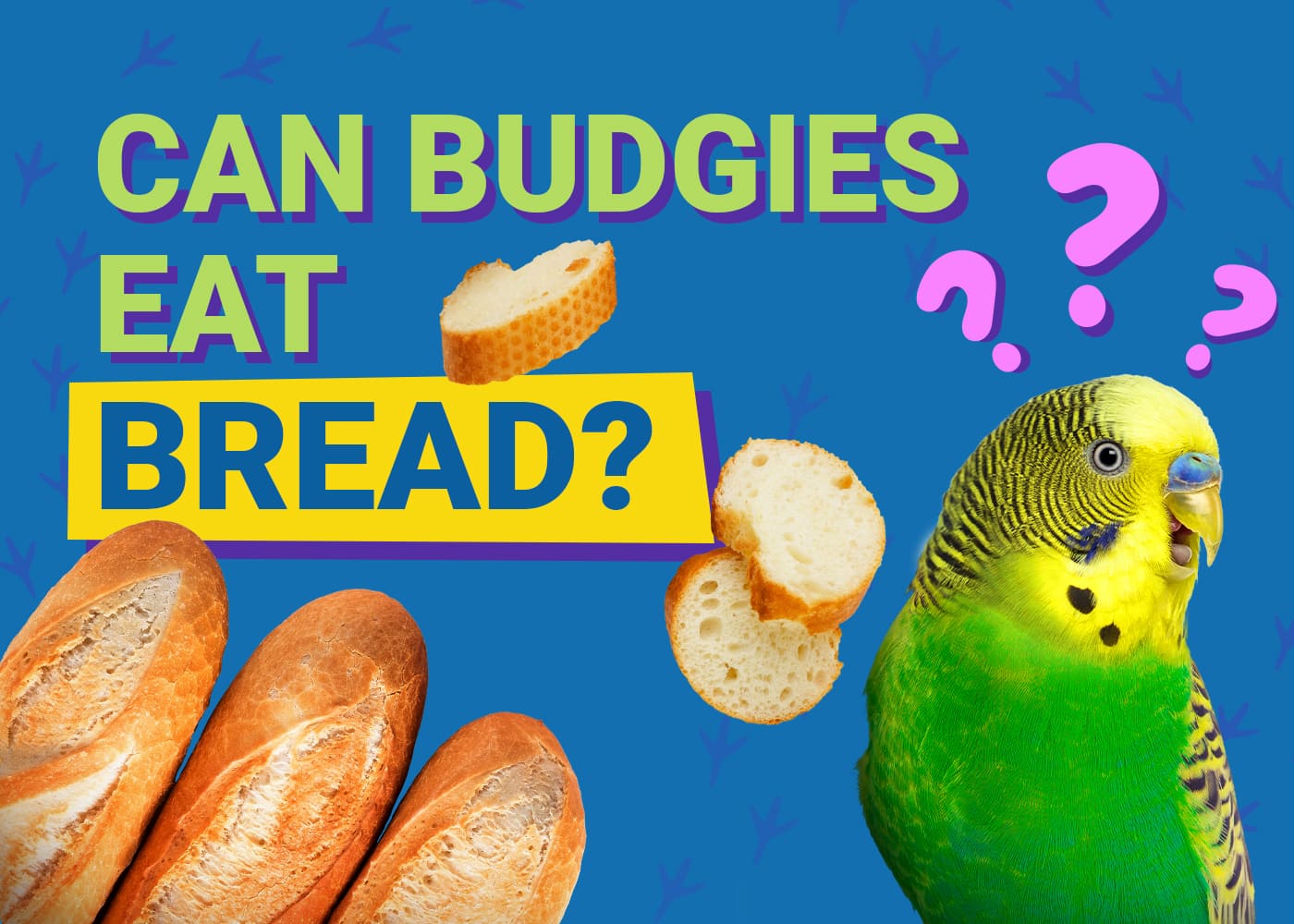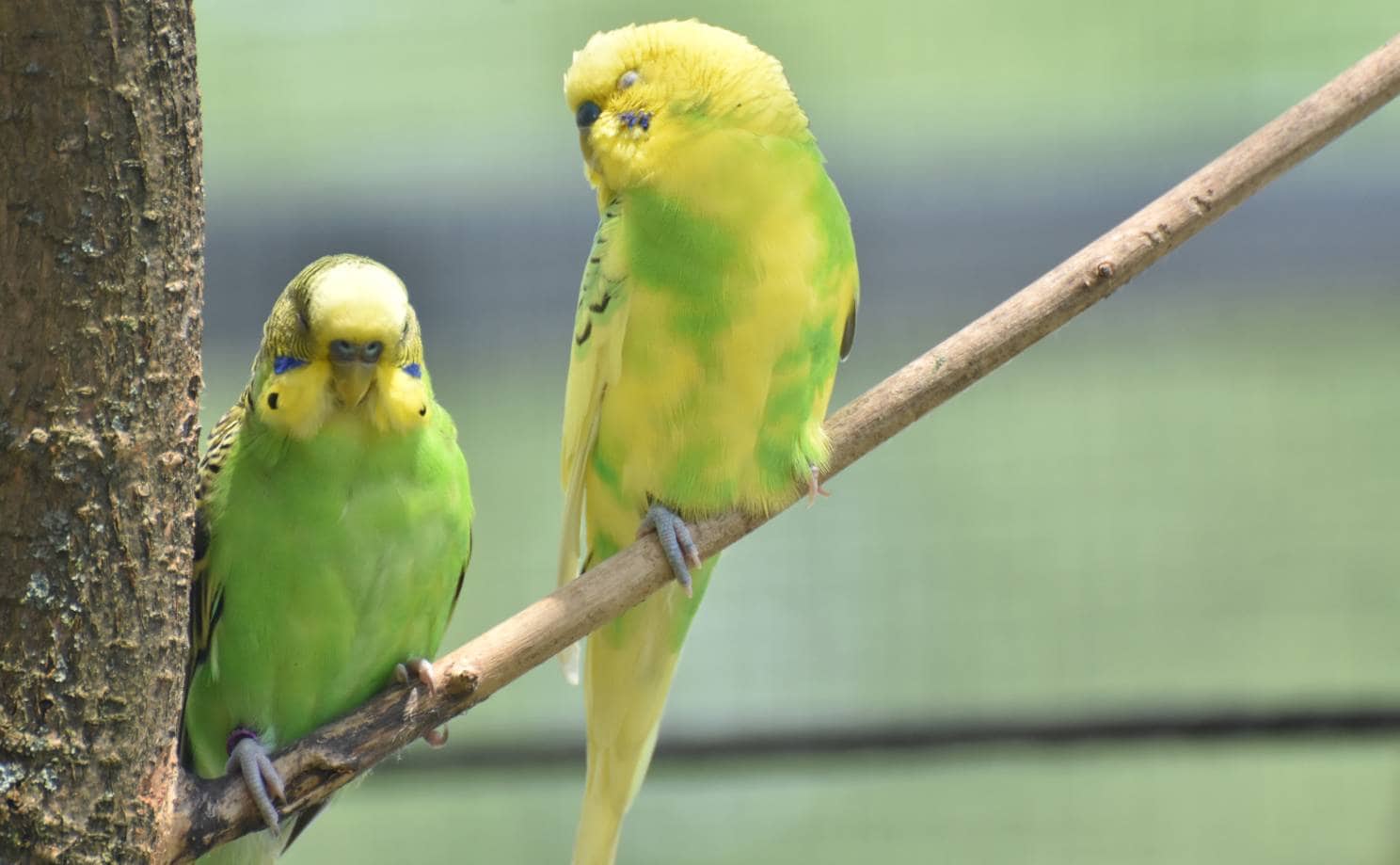
The Glaucous Macaw is a large parrot that is extinct or on the verge of extinction. They are related to the Hyacinth (which is vulnerable), Lear’s Macaw (which is endangered), and the Spix’s Macaws (which is currently extinct in the wild), and all hail from South America.
If you’re interested in learning more about the Glaucous Macaw and why they have disappeared from the wild, we go over the whys and the hows.
Species Overview
| Common Names: | Glaucous Macaw |
| Scientific Name: | Anodorhynchus glaucus |
| Adult Size: | 27 – 29 inches |
| Life Expectancy: | 15+ years |
Origin and History
The Glaucous Macaw was historically found in Northern Argentina, northeast Uruguay, south Paraguay, and Brazil, from the state of Paraná and southward. They could be found around the major rivers, and the most frequent sightings tended to be around Corrientes, Argentina.
In the later part of the 1800s, the bird was already rare, and by the 1900s, there were just two sightings. Sightings have only dwindled since then.
According to the International Union for Conservation of Nature (IUCN),1 the Glaucous Macaw is on the Red List as “Critically Endangered — Possibly Extinct.” The IUCN believes that there are fewer than 20 living in the wild, and the loss of the species was caused by depletion of habitat through agriculture and housing development and hunting and trapping for the pet trade industry.
There have been several attempts to discover living species, but these have been unsuccessful so far.

Diet
The Glaucous Macaw’s diet consisted primarily of palm nuts, commonly from the Yatay Palm, along with berries, nuts, vegetation, and various fruit.
Glaucous Macaw Colors and Markings
The Glaucous Macaw is a large parrot at about 28 inches (70 cm), with a long tail and large beak typical of most Macaws. They’re a turquoise-blue color, with a light to medium gray head. They have a featherless pale-yellow ring around each eye and yellow crescent-shaped lappets bracketing the lower part of the beak.
Nesting
The Glaucous Macaw was commonly found in subtropical forests with cliffs and savannahs with palm trees. They nested on these cliffs and on steep banks and on occasion in tree cavities. It’s believed that they would average a clutch of two eggs.
Status in the Wild
The World Parrot Trust sent four biologists and conservationists to Brazil in 1999 to survey and search for any sign of the Glaucous Macaw. Unfortunately, they were unable to spot any of these birds during their survey.
They did manage to gain essential information regarding the contributing factors that led to the loss of this beautiful parrot. This information might help the conservation of other threatened species and Macaws.
The Glaucous Macaw has not had a reliable sighting since the 1960s. As far as we can determine, the last known Glaucous that was seen alive was in 1936 at the Buenos Aires Zoo, where they were photographed. Unfortunately and not surprisingly, the photo is black and white and doesn’t capture the beautiful plumage.
This 2018 study recommended that the Glaucous Macaw be listed as “Critically Endangered — Possibly Extinct,” all due to there not being any confirmed sightings since the 1980s, combined with the extreme destruction and loss of their habitat.
Summary
This is a very sad story and one that’s ongoing, with reports that we could lose 1 million species on Earth within the next few decades. In our lifetime, we will probably never see the Glaucous Macaw in person and can only look at old photographs or mummified remains in natural history museums.
The Glaucous Macaw is protected under Brazilian law if there are any surviving birds. It’s thought that it’s possible that there may be a small number of these parrots somewhere in the unexplored parts of the forest. It’s not likely but we can always hope.
Featured Image Credit: Wirestock Creators, Shutterstock









